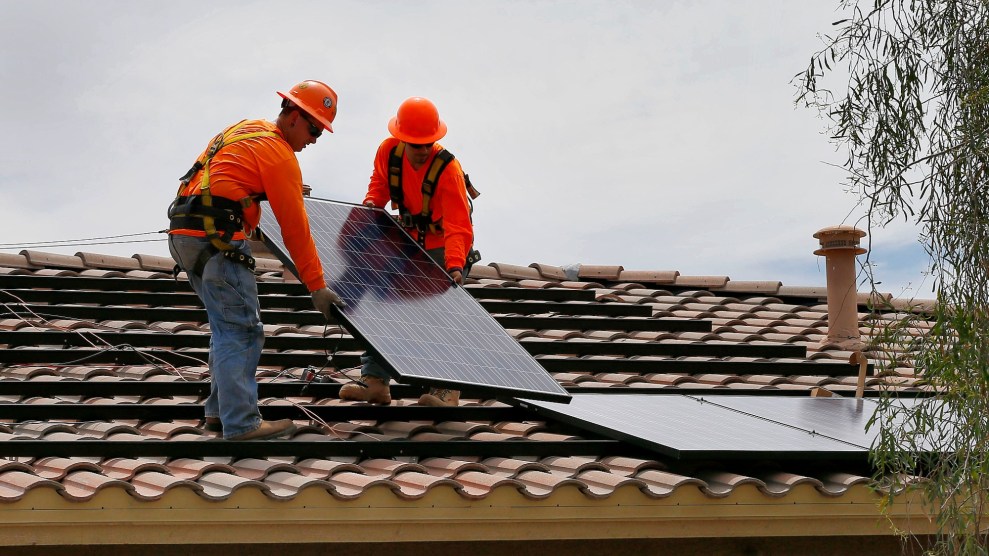Hurricane Katrina exposed terrible flaws not just in the New Orleans levees, but within the agency that designed and built them, the U.S. Army Corps of Engineers. After the storm, investigators discovered that design errors were to blame for the collapse of several floodwalls—breaches that accounted for most of the flooding of the city. For the first time in its storied history, which dates to the Revolutionary War, the Corps admitted to committing fundamental engineering mistakes. The Corps’ internal investigation also found the city’s levees and floodwalls riddled with problems, “a system in name only” whose individual elements were sloppily constructed and didn’t even fit together—a big problem when you’re surrounded with rising water.
Corps officials say they’ve learned their lesson. But it’s not clear they’ve had the opportunity do so, or the inclination. The Corps has been handed billions of dollars in emergency appropriations and has been working flat out since Katrina—first to clean up its own mess, then repairing and upgrading the levee system to meet the most basic safety standards, so New Orleans won’t get washed away this year or next.
Of course, those tasks are simple compared to the longer-term challenges the agency faces. It will have to figure out how to protect sinking, exposed New Orleans in an era of global warming, rising seas, and, according to some scientists, bigger hurricanes. It will have to fortify other coastal communities as they too grow more vulnerable to high water. In its current form, the Corps isn’t up to these tasks. But right now it’s all we’ve got.
Here are four problems with the Corps that led to the near-destruction of New Orleans—and four obstacles the Corps must overcome in order to face its future challenges.
Skewed priorities. The Corps’ traditional domestic mission is to aid navigation, and for more than a century its bread and butter has been big-ticket projects that promoted shipping: river levees, locks, dredging harbors, and channels. Not surprisingly, these are also the projects most favored by shipping-industry lobbyists—and members of Congress eager to get federal money spent in their districts. Hurricane levees, by contrast, have no political constituency except the public. Their principal economic benefit is warding off total destruction, something people and politicians often don’t fully appreciate until it’s too late. The Corps squabbled endlessly with other agencies over the levees, all losing sight of the bottom line: safety. At one point, for example, the Corps could not agree with the New Orleans Sewerage and Water board on how to join a canal floodwall to a pumping station. So they simply stopped building the wall 200 feet short of the station, leaving a gap—a man-made breach.
Backward science. The Corps designed the hurricane levee system in the 1960s and never updated its basic layout, despite 40 years of progress in hurricane forecasting and computer modeling that revealed many weaknesses in those designs. Meanwhile, Corps officials also downplayed the mounting data that showed just how easily New Orleans could be destroyed. They even managed to ignore their own experiments. A group of Corps scientists did a study in the 1980s that predicted exactly how the New Orleans floodwalls could breach if not anchored firmly enough—but few in the agency paid attention and the results were all but forgotten.
Funding. As construction of the levees dragged on for decades, Congress and successive presidential administrations starved the system. Corps officials and Louisiana politicians protested at times, but generally went along with the cuts and shortfalls. In the 1980s, for example, the Corps got new data showing that New Orleans and surrounding areas were sinking into the Gulf of Mexico even faster than previously thought—meaning completed levees would be too low. Instead of pursuing a system-wide upgrade, the engineer in charge decreed that only new projects would take the data into account. In a flood, what happens if only half your floodwall is built to the correct height?
Outsourcing. The Corps practically invented the now-common technique of outsourcing government work to private contractors. As the years passed, the number of working engineers at the agency gradually fell, especially in the areas of levee design and construction. Outsourcing weakens accountability by spreading responsibility around. The flawed floodwalls, for instance, were designed by an outside firm and then approved by Corps reviewers. And these problems continue. In the massive repair job that followed Katrina, outside investigators found Corps contractors were using sand—not the stronger, required muddy clay—to rebuild levees to the east of New Orleans.
Obstacles for the future:
Abortive Reform. After Katrina, the Corps was handed the task of getting to the bottom of what went wrong with the levees—in other words, investigating itself, something that experts in government accountability say is a recipe for trouble. The investigation was vetted by outside engineers and did find serious engineering errors. But its narrow, purely technical scope may come back to haunt the agency. Investigators never attempted to answer why the mistakes were made or analyzed the institutional flaws that set the stage for them. The Corps has made some changes—finally doing a thorough computer analysis of the flood risk New Orleans faces, for example. It’s hard for any institution to reform itself. The White House and Congress could restructure the Corps, or at least shake it up. But they haven’t shown much interest. So the Corps is still basically the same agency it was before the storm—only now it has vastly more money and power over the future of New Orleans.
The Vision Thing. Traditionally, Corps projects come about from a combination of lobbying, pork, and questionable analyses of costs and benefits. If the United States means to protect New Orleans and other vulnerable coastal areas, it needs to junk this process. The Corps needs a vision for coastal protection, one that incorporates the effects of shifting populations, global warming, and rising seas. Historically, though, the Corps has had to be dragged kicking and screaming into a new era. In the 1970s, for example, the agency fought attempts by New Orleans community groups to force it to do detailed environmental impact studies of its projects—until a federal judge finally ordered it to get with the program.
Politics. Even if the Corps gets its act together, it can’t act independently. It gets its marching orders from Congress and the White House, and their priorities shift depending on who’s in power. A project may start out with a bang, only to lose momentum 5, 10, or 20 years down the line. The New Orleans levee system was begun under President Lyndon Johnson, and it was an incomplete and incongruous mess when Katrina hit 40 years later during the second Bush administration.
Nature. The Corps’ stock-in-trade for two centuries has been controlling nature—shifting river courses and diverting floods. Often, it has failed. What happens if nature becomes progressively more uncontrollable?








